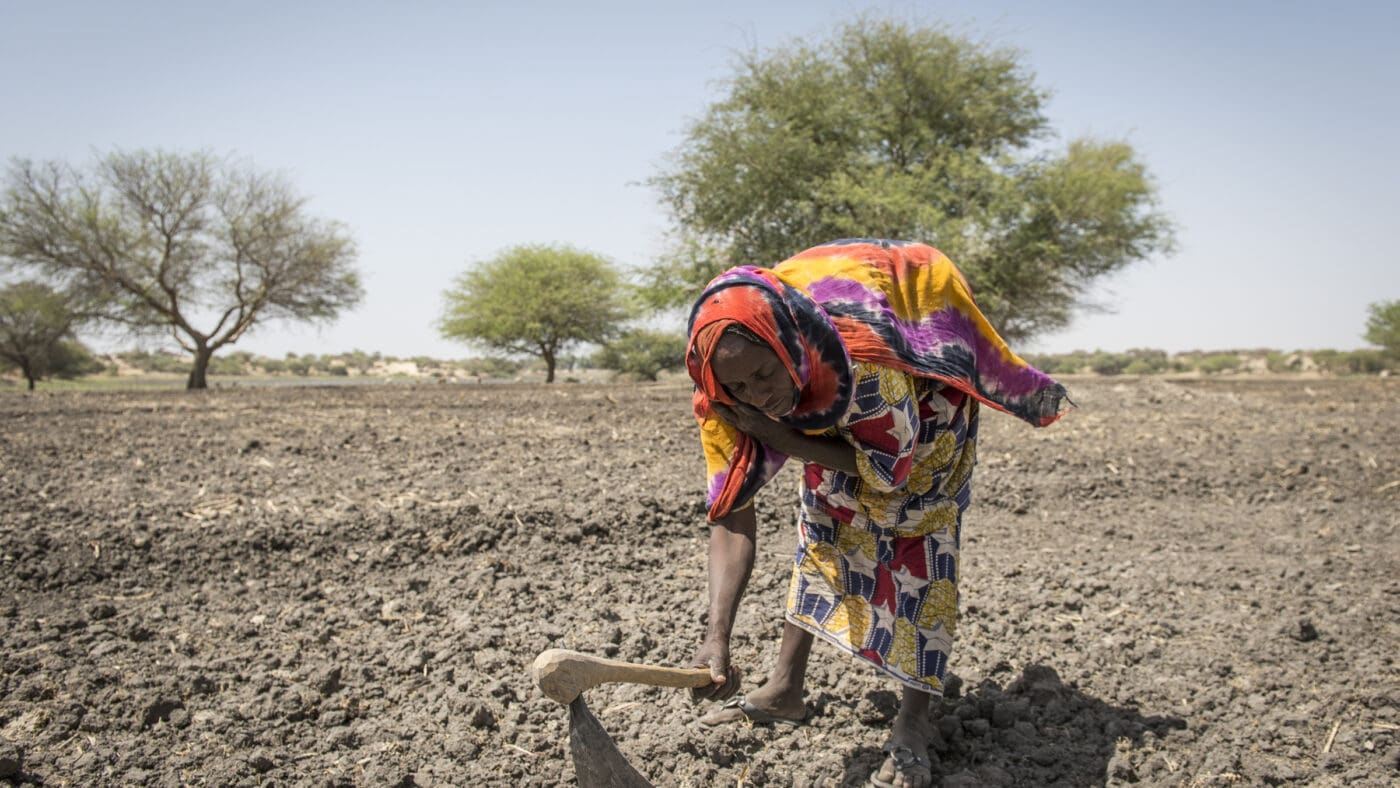
US Against HUnger
CLimate Starves:
Hunger & the Climate Crisis
Watch Part 3 of the 4-Part series “US Against Hunger,” an exploration into the key drivers of hunger as expert panelists discuss the current issues of global food insecurity.
Discussion examined the impact of climate change on hunger, and how the United Nations World Food Programme builds resilience among vulnerable communities.
World Food Program USA’s Climate Starves panel on April 21 explored the far-reaching impacts of climate change in driving hunger, degrading land and crops, and driving migration. During this live event, panelists gave a behind-the-scenes look at how climate change is affecting the world’s most vulnerable communities and how the United Nations World Food Programme (WFP) provides food assistance and works to build resilience to climate shocks.
The panel, moderated by international journalist Femi Oke, featured: Gernot Laganda, U.N. World Food Programme Chief of Climate and Disaster Risk Reduction; Laura Melo, U.N. World Food Programme Country Director in Guatemala; and Hindou Oumarou Ibrahim, acclaimed environmental and indigenous activist and President of the Association for Indigenous Women and Peoples of Chad. Barron Segar, World Food Program USA President and CEO, delivered powerful opening remarks about climate change.
“Climate change is creating challenges for the U.N. World Food Programme that we never envisioned, and it’s only getting worse,” Segar said. “But there are solutions… you can be part of that solution to climate change, and we need your help.”
To frame the conversation, Gernot Laganda discussed the two ways that climate change drives hunger. Most prominent are extreme weather events like droughts, monsoons and floods that damage food systems all over the world.
The second way that climate drives hunger is less visible but can be just as insidious, Laganda said. These more subtle instances include variations such as irregular rainfall, shifting patterns for pests and disease, growing heat stress in livestock and more.
“These stresses do not cause big humanitarian disasters, but they put households into a much more vulnerable place,” he said. “So that even when a smaller shock happens, no matter where it comes from – it could be COVID, it could be an economic shock, it could be some smaller, seasonal climate shock – that can lead to a food crisis.”
Hindou Oumarou Ibrahim said her nomadic, pastoralist culture are so attuned to their home environments that they’ve developed techniques to adapt to the challenges of changing climate patterns. She said she was heartened by the video of people in the Sahel region working on WFP resilience projects. “They are the engineers of that ecological system,” Ibrahim said. “So to just push them a little bit with financial support, with training, with the materials or with the weather forecasts that add to their own traditional knowledge, they can turn this land into a dream for their children.”
Laura Melo discussed the on-the-ground realities of the climate crisis in Central America.
“When there isn’t enough to eat, as any of us would do, we would be ready to take desperate measures to feed our children,” Melo said. “If any of us see that we don’t have enough to feed our small child, we’ll do anything to find an alternative.”
She added that many of the families in Guatemala and throughout Central America rely on agriculture for their livelihoods. When shocks like Hurricanes Eta and Iota hit, for some families “everything vanished.”
The effect of the destabilization of communities in such a way, Melo said, is part of the reason people are forced into drastic decisions such as attempting to migrate to the United States.
That sentiment was echoed by U.N. World Food Programme’s Latin America and Caribbean Regional Director Miguel Barreto in a featured video, who reported that 15 percent of people in Latin America are seeking to migrate due to the COVID-19 pandemic.
Melo later highlighted resilience initiatives the U.N. World Food Programme pursues in Guatemala and around the world to help people create long-term stability and prosperity. She described a region of Guatemala that habitually faces climate shocks where the U.N. World Food Programme provided seed capital to women – with a focus on indigenous groups – to start businesses, diversify their families’ incomes and establish credit and savings. Incidentally, when COVID-19 struck the community and many of their husbands lost jobs, —the women were able to keep their families afloat because of their critical savings.
“This made the difference for them between starving or being able to cope with the shock,” Melo said.
In closing, Laganda challenged the audience to celebrate Earth Day every single day and presented some immediately actionable improvements to better our effect on climate and hunger.
“We can become more aware about the environmental and carbon footprint of our food choices,” he said.
Ibrahim called on young people to stand up for what they believe in and to embrace activism, a role she was thrust into at an early age.
“When you’re born an indigenous person, you’re already born an activist because you already struggle for your people to access land, to access territories, to get respect, to access clean water,” Ibrahim said. “I can’t fight for human rights without also fighting for environmental rights.”
Event Highlights
Full Discussion
About US Against Hunger
The US Against Hunger discussion series explores key drivers of hunger and food insecurity, including conflict, gender inequality, climate change and food waste. Each panel convenes high-profile thought leaders, experts, influencers and business leaders across sectors to examine these issues and what must be done to make a Zero Hunger world a reality.